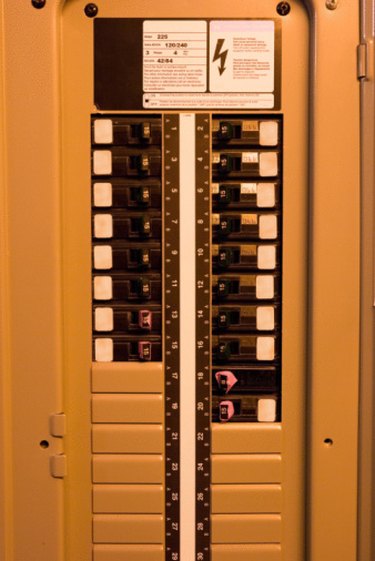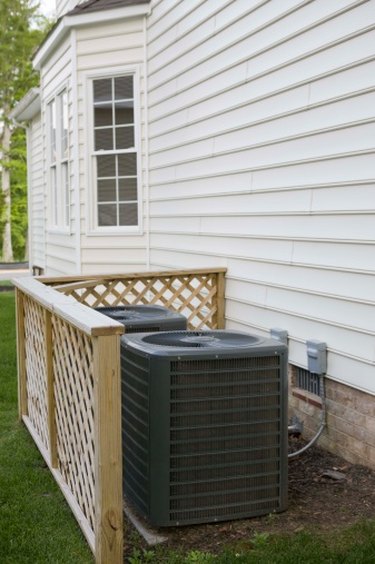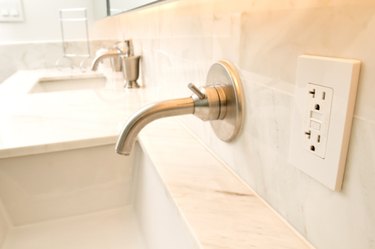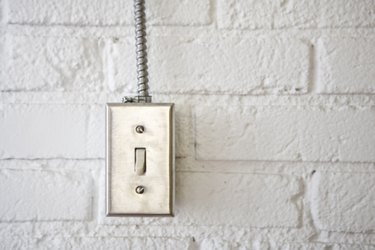Things You'll Need
Appliance owner's manuals
Calculator or pencil and paper

Circuit breakers are switches in your electrical box that, if overloaded or shorted, automatically shut off the flow of electricity to the outlet, appliance, switch or light. The amount of circuits needed for a home depends upon the house size; the amount of electricity needed to run all appliances, lights and outlets; the amount of Ground Fault Circuit Interrupter (GFCI) breakers; and the need for dedicated breakers -- those that control a single heavy-load appliance, such as a stove or air-conditioning unit.
Step 1

Determine how many dedicated breakers you will need. Appliances requiring dedicated breakers include electric stoves, electric dryers, pool pumps, air conditioners, furnaces, hot tubs and water heaters. The size of the breaker will be determined by the appliance's amp usage.
Video of the Day
Step 2

Count the number of GFCI breakers you will need. GFCI breakers are required for electrical connections that are located near water sources -- outlets in bathrooms or kitchens, outdoor outlets or spa and swimming pool outlets. They also are recommended for workshops.
Step 3

Count the number of lights and outlets inside and outside the house. Each standard circuit can handle a certain load, or amount of electricity. Standard breakers are 15 to 20 amps, which is the amount needed to run typical household lighting or a small appliance, such as a blender. Larger appliances need 20- to 30-amp breakers. An electrician should determine the amount of amps each room will need. The safety rating for standard circuit breakers is just 80 percent of the maximum load, meaning a 15-amp breaker is intended for an electrical load up to only 12 amps.
Step 4

Add together all of your determinations to ascertain the amount and types of circuit breakers needed. If you are building a new home, Relectric.com says, "It is wise to request a minimum of a 200-amp circuit panel with 40 circuit breakers." Having enough circuits from the beginning will save a lot of work if you need to add appliances or electrical outlets later.
Video of the Day